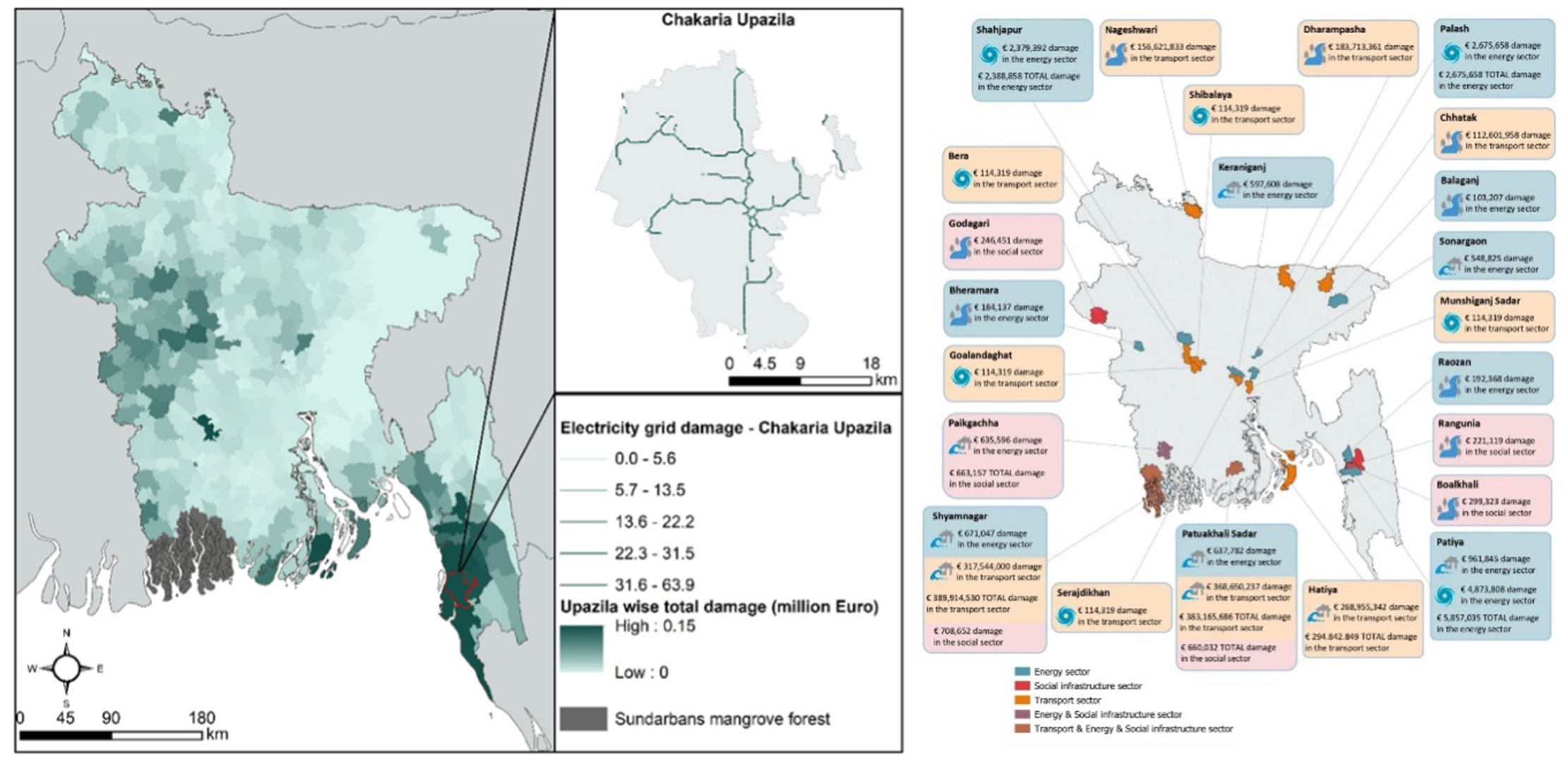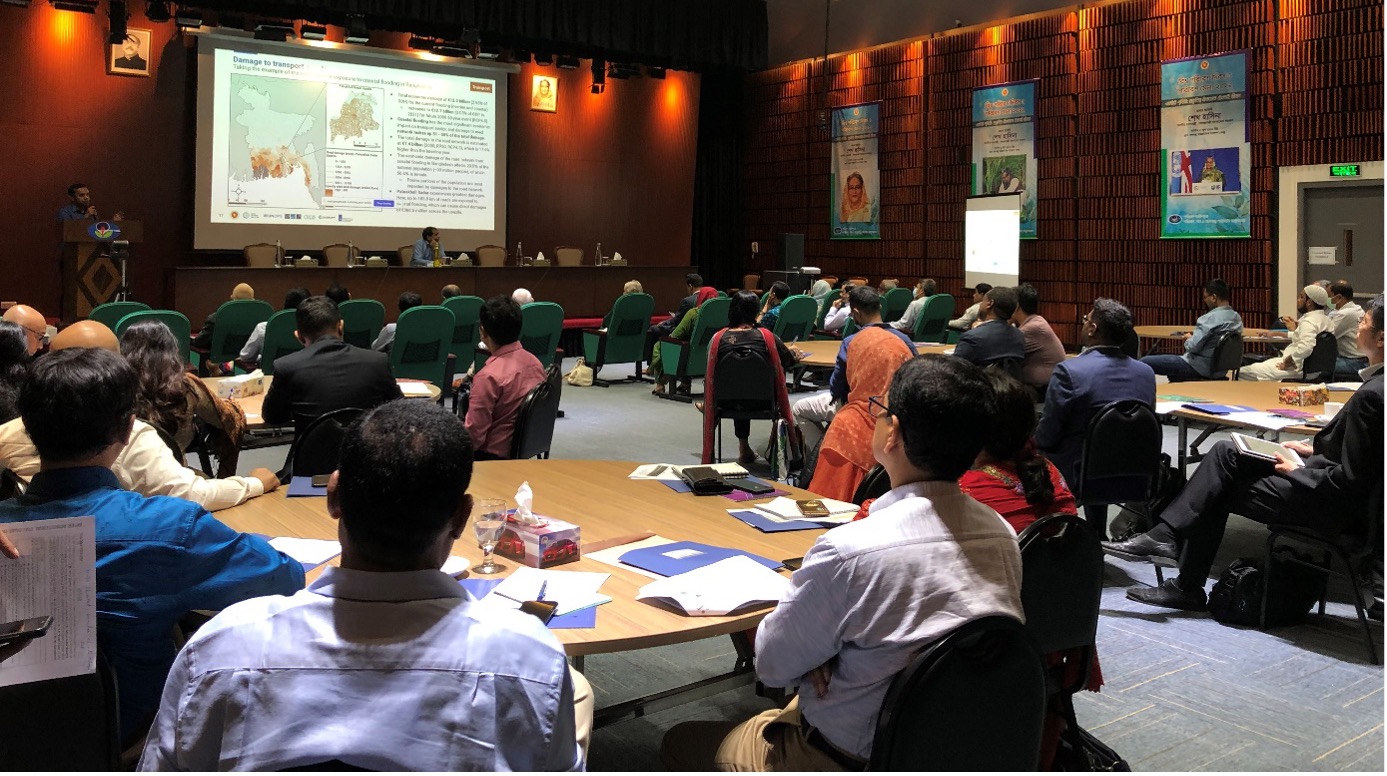Ministry of Environment, Forest and Climate Change of Bangladesh and GCA host inter-ministerial dialogue on climate-resilient infrastructure in Dhaka
T he Global Center on Adaptation (GCA) is working with the Ministry of Environment, Forest and Climate Change (MoEFCC) of the Government of Bangladesh to stress test the resilience of critical infrastructure systems and assets against current and projected climate hazards in Bangladesh. This work is being developed in collaboration with UNOPS, the University of Oxford, and the Centre for Environmental and Geographic Information Services (CEGIS), with support from the Ministry of Infrastructure and Water Management of the Netherlands.
The stress test uses high-resolution spatial data on climate hazards, infrastructure networks and assets, and socio-economic data to assess exposure and quantify the direct and indirect damages to the provision of infrastructure services at a national scale. The analysis is also the first to disaggregate climate impacts through infrastructure systems by wealth quintile using an innovative World Bank household dataset in coastal areas, to help prioritize the needs of poor and vulnerable communities.
MoEFCC presented the preliminary findings of the stress test at the first Inter-Ministerial Dialogue on Climate-Resilient Infrastructure on 22nd September 2022 to validate the insights and to identify entry points to use the data to prioritize resilient infrastructure investments in national development plans, including the Bangladesh 8th five-year Plan, the Mujib Climate Prosperity Plan, and the Bangladesh Delta Plan 2100.

Left: Example of electricity network exposure to cyclones in Bangladesh; and Right: Preliminary priority adaptation needs for Bangladesh’s infrastructure.
The early results reveal:
- Transport: Total economic damage due to riverine and coastal flooding (RCP4.5, 50-year event) can reach €12.7 billion (3.05% of GDP) by 2050 for the transport sector alone. Up to 50.4% of women population risk losing access to transport infrastructure such as roads, which are essential to access other facilities such as education and healthcare.
- Energy: Up to 90% of Bangladesh’s electricity grid is exposed to the impacts of cyclonic winds (>30m/s) under a 100-year event, and over 65% of electricity substations and 67% of powerplants are exposed to climate hazards in the 2050 scenario.
- Social: coastal flooding is expected to cause €25.72 million in damage to education facilities by 2050 and the impact of riverine flooding will affect the access of almost 80% of population to education facilities.
- Households: 76% of households in coastal areas of Bangladesh are at risk of climate change. The impact is felt the most by the lowest income communities in rural areas which are mainly affected by cyclones and coastal floodings.
- Sustainable Development Goals: The impacts of climate hazards to Bangladesh’s infrastructure limit progress to the achievement of the SDGs in the country. Particularly in coastal areas, SDG 4 (Education) progress is limited by an average of 15% due to disruption to access to education facilities and SDG 8 (Employment) by an average of 10% due to disruption to access to market centers.
The Inter-Ministerial Dialogue brought together over 60 officials and technical experts from all sectors across the government; development partners including the World Bank and the British High Commission in Dhaka; and NGOs. The event promoted a dialogue on influencing investments in climate-resilient infrastructure to address Bangladesh’s infrastructure adaptation needs. Moving forward, GCA will use the stress test to support MoEFCC, the Planning Commission, the Government of Bangladesh, the World Bank, the Asian Development Bank, and development partners to prioritize and finance adaptation projects.

Participants at the Inter-Ministerial Dialogue on Climate-Resilient Infrastructure.